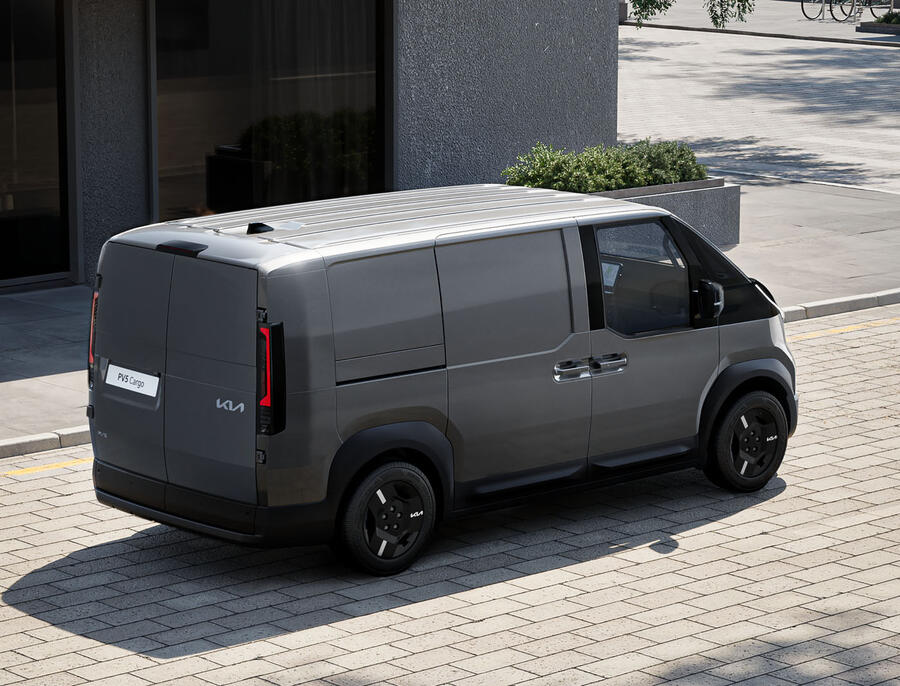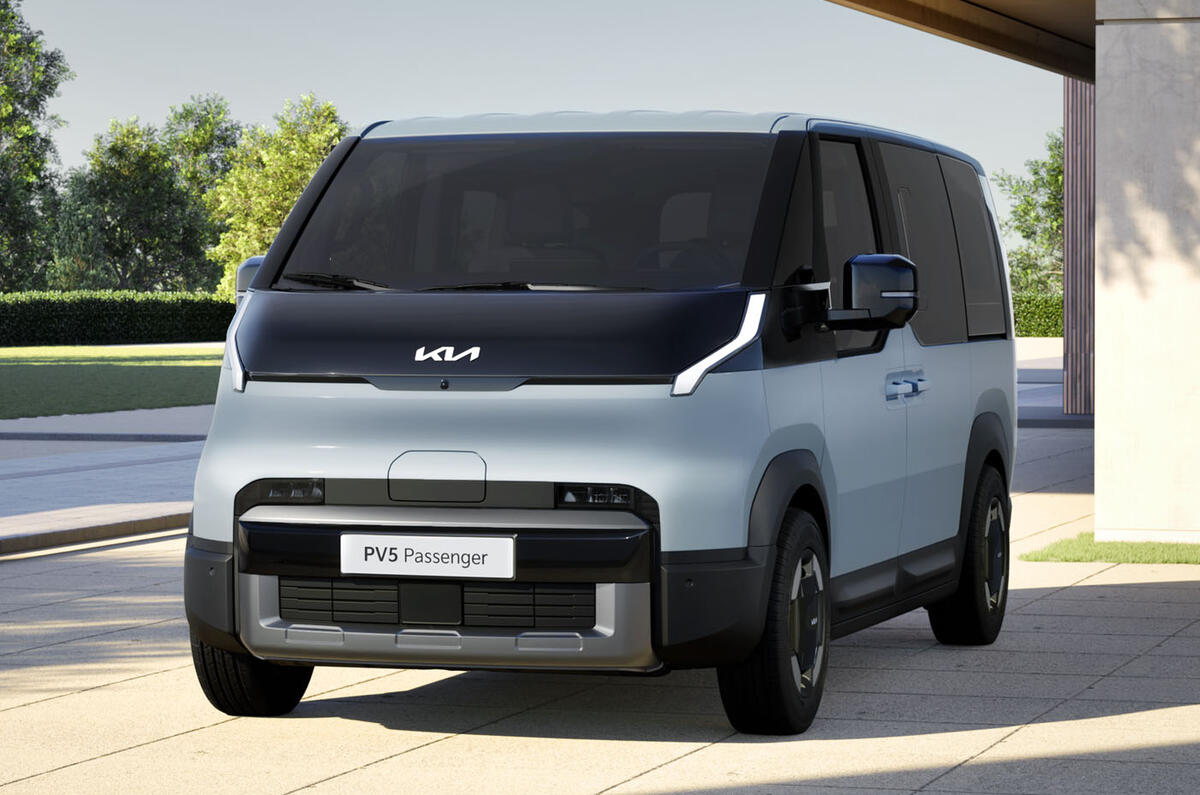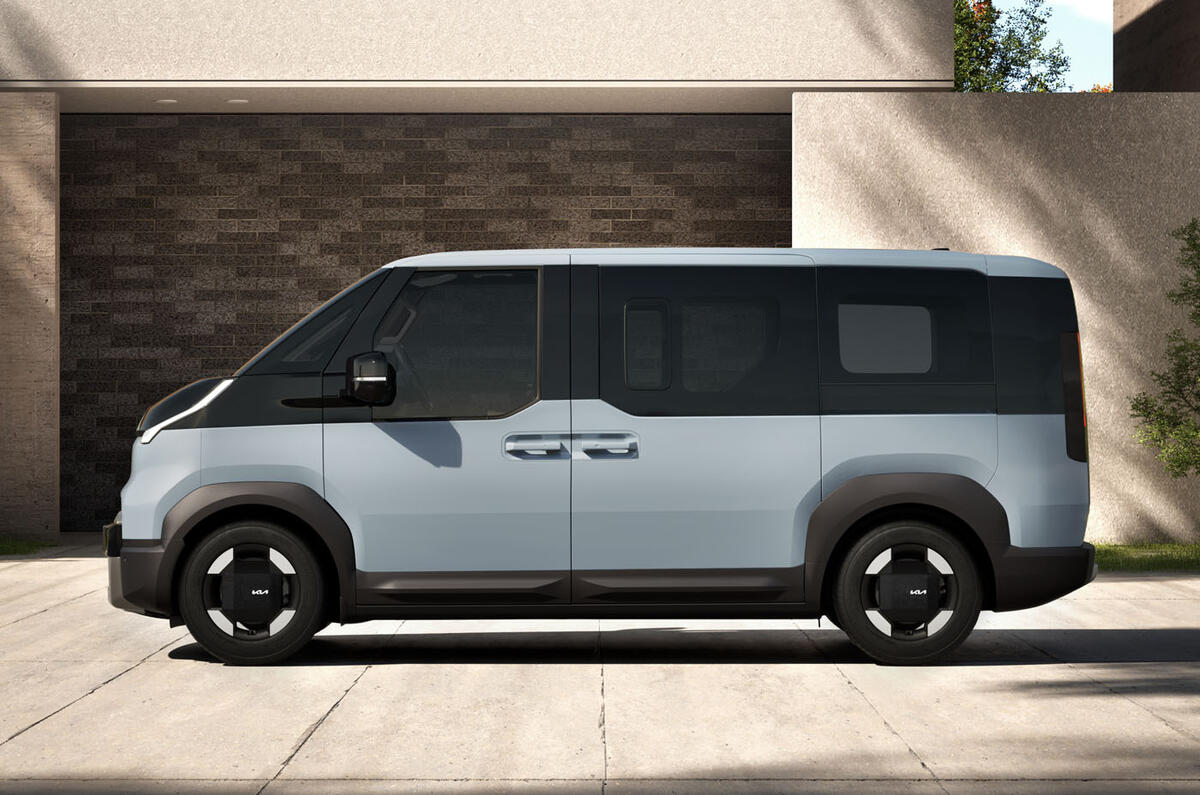The Kia PV5 has been unveiled as the brand’s first van, conceived as a futuristic rival to the Volkswagen ID Buzz.
The first in a new line of models dubbed Platform Beyond Vehicles (PBVs), it will be followed by a larger PV7 due in two years, aimed squarely at the venerable Ford Transit and Geely-owned brand Farizon's SV.
It has been developed from the ground-up as an electric van rather than using an adapted combustion-engine platform, as is the case with the Ford E-Transit Custom.
Technical details have yet to be confirmed, but the PV5 concept shown in 2024 used a modified version of the E-GMP platform that underpins a number of the brand’s electric SUVs. It mirrored the entry-level Kia EV3 in featuring a single front-mounted electric motor and electricals running at 400V, rather than the higher 800V used by the upmarket EV6 and EV9.
It’s therefore expected to offer the same 201bhp and 209lb ft motor as the EV3, which allows the crossover to dispatch the 0-62mph sprint in 7.6sec. Performance will undoubtedly differ in the van, however, especially once fully laden.
The EV3 is also offered with batteries measuring 58.3kWh and 81.4kWh, yielding 270 or 375 miles of range, respectively; this, also, would be limited in a larger and heavier van.
Although the PV5 has been unveiled in passenger and cargo van forms, Kia said that it will show yet more variants at its upcoming EV Day (on 27 February) event. The nature of the van’s skateboard-style EV platform means that it can effectively wear any ‘hat’ that Kia desires, and the concept was previously shown in both pick-up and rugged Volkswagen California-style camper van forms.

What should remain consistent between each variant is the front end, which remains true to the concept. Angular LED daytime running lights are positioned high on its rakish nose, while the main-beam headlights are set into the lower bumper.
The interior’s design has yet to be shown in full, but the exterior images released by Kia reveal split instrument and infotainment display screens – a key difference from the brand’s cars, which typically use a combined fascia.















Join the debate
Add your comment
Autocar, don't forget the big selling Vauxhall Vivaro/Peugeot Expert/Citroen Dispatch Electric vans either. More of a rival to this than the expensive, small Buzz.
The progress of Kia & Hyundai in such a short period of time is very impressive. They've really given the older European manufacturers a much needed wake up call. However, the US really has no excuse for the below average stuff their manufacturers continually churn out. No-one outside the US wants their cars. The stuff from Europe (including the UK) and Asia is just so much better.